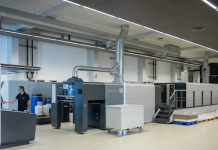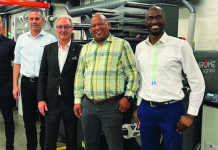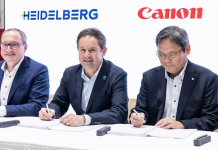Heidelberg is renovatings its small format product portfolio as print shops in the small-format offset printing sector are facing smaller run sizes, shorter delivery times, and tough competition on pricing. More and more companies are turning to industrial production to stay competitive.
Following the introduction of the successful Speedmaster SM 52 and SX 52, Heidelberg has adapted its product portfolio for the new market conditions, thereby ensuring it covers the entire spectrum of relevant applications.
As a consequence, production of the Printmaster GTO 52 will be phased out from March 2014. The highly productive Speedmaster SM 52 has long offered customers working with the Printmaster GTO 52 an effective springboard for further growth. Since drupa 2012, the Speedmaster SX 52 has been available in configurations that can be tailored precisely to customer requirements.
The press can also be ordered with the Anicolour short inking unit, which is ideal for the production of short print runs due to its extremely short makeready times and low paper waste. More than 30,000 printing units of the Speedmaster SM 52/SX 52 have already been sold worldwide.
The companys Linoprint C 901 and C 751 digital printing systems offer print shops an attractive and cost-effective complementary solution for printing short and/or variable commercial runs. We are adapting to the new requirements in the small-format segment and are optimising our portfolio for this market, explains Stephan Plenz, member of the Management Board responsible for Heidelberg Equipment. Because our portfolio for this segment comprises offset and digital printing technologies, customers benefit from the close interlinking of both worlds and can boost their competitive edge even further. The Speedmaster SM 52 is available as a two- and four-colour press with a standard delivery. Depending on the model, components such as Prinect Press Centre Compact and the automatic wash up devices for the inking unit and blanket and impression cylinders are standard features.
In day-to-day work, the press more than meets requirements for flexibility in terms of materials and printing stock thickness and delivers short setup times and high production outputs of up to 15,000 sheets per hour. The Speedmaster SM 52 has also been designed to accommodate inline applications such as numbering, perforating, and envelope printing. Alongside the Speedmaster SM 52, Heidelberg also offers the Speedmaster SX 52 – a machine platform that can be customised for specific requirements. The press features modern technology and an extensive range of configuration options such as Anicolor short inking unit technology, coating unit, printing stock thickness to 0.6 mm, perfecting devices, and technology for security printing – all of which ensures that print shops can handle a broad and varied range of orders.
From two to ten printing units, a range of deliveries are available depending on the model and to suit the space available and the print shops run sizes. Both series can naturally be integrated into the Prinect workflow and have been designed for ecological print production.
Since drupa 2012, the Linoprint C 901 and Linoprint C 751 have been available with the new Prinect Digital Print Manager. Even without integration into a complete workflow, this solution provides users with a highly efficient and transparent digital print workflow with a wide range of functions, such as variable data management, post press with digital inline finishing systems, and a document-oriented workflow.
Optional integration into the Prinect print shop workflow creates a seamless hybrid workflow between offset and digital printing that is unique in the industry. As a result, customers in the A3 market segment can utilise a whole range of options to provide their end customers with the service they require.





















